- Home
- Tim Winton
The Boy Behind the Curtain Page 7
The Boy Behind the Curtain Read online
Page 7
Animals with names like these would be at home in a satire by Jonathan Swift, so it should be no surprise to discover that the dean’s co-ordinates put Gulliver hereabouts. At the time Swift was writing there was indeed an austral island teeming with creatures more strange and marvellous than even he could imagine, but so quickly have they disappeared from view or from existence altogether that they can sometimes seem a product of mere fancy. The sad fact is that the citizen on the street in Sydney will have as little idea about what a dunnart is as his counterpart in London or Chicago. For the record, it is a carnivorous mouse-sized marsupial with huge ears. There are about twenty species of them.
Eventually the valley becomes a rutted old delta and eucalypts give way to jam and other kinds of acacia. Conscious that it would mean an all-night walk back to the homestead should I stake two tyres or get myself bogged beyond recovery, I take the sketchy track slowly.
Finally, with the sun gone beyond the western ridges, I come out upon the great and terrible expanse of Lake Moore, at whose dry shore I’ll make camp for the night. I’ve driven all day away from the coast in order to roll my swag out on the edge of a ghostly body of water. There are better campsites back in the salmon gums or up on the quartz ridges but the eerie blankness of the saltpan fascinates me. I’ve never slept here before. I want to be present at dusk and dawn to see what comes in from the shimmering distance.
Just on dusk, I walk a little way up the scree slope behind me to a low ridge where a quandong – such a shapely, mild-looking tree for a landscape as austere as this – lays down its decaying shade on the samphire edges of the saltpan. A close relative of the sandalwood, the quandong produces a red stone fruit keenly sought by emus, who are responsible for spreading its seeds in their scat. Quandong fruit was a favourite bush food of Aborigines and in recent years has enjoyed a minor vogue as a preserve. Beside the pale little tree I stare across the dimming lake. In the far distance the last of the sun hits a solitary dead eucalypt. The skeleton tree flares like a beacon for a few seconds and fades to nothing. From the edge of the breakaway below me, another euro bounds out into the open and sets off south along the shore.
Back at the vehicle, I tip my swag onto the stony ground and cook a meal on the little propane stove. In the gathering dark bats flit overhead. A creepy, egg-like moon squeezes up out of the interior. The stiff easterly breeze begins to blast across the gritty surface of the lake and somewhere behind me a tree creaks. I climb into my swag to get out of the wind – I can see just as well from there.
At midnight I wake, surprised to have slept for almost four hours, startled by the passage of some emus. Later other creatures will move by unseen, thudding south. I snuggle back down but sleep eludes me. The moon overhead is almost oppressive and I hadn’t anticipated how intimidating the luminous expanse of the lake would be. The broad wash of the Milky Way begins to look like a reflection of the saltpan below and after a few hours I have the discomforting sense of being pressed between two fierce fields of light.
I twist down into my canvas cocoon and cannot help but think of the three small girls who trekked alone through this country back in 1931. Theirs is a legendary journey, recorded by Doris Pilkington and made famous by Phillip Noyce’s film Rabbit-Proof Fence. Molly Craig, Gracie Fields and Daisy Kadibill spent nights hiding in hollow logs and walked all day for nine weeks at the mercy of forces crueller and more implacable than landscape. They were up against the blind and pitiless logic of institutionalized racism. And here I am, a big pink grown-up with a LandCruiser, beginning to feel – well, a little uneasy in the moonlight.
Just before dawn cockatoos begin to shriek in the trees on the ridge, and as light comes up I roll out of my swag to make coffee while spinifex pigeons clatter past.
As I set off along the shore the first pinprick of sun is at the horizon. I veer out from the rocky breakaways that separate lake and land to walk amid the hundreds of animal tracks impressed into the soft crust of the saltpan. Lying north to south, Lake Moore is well over 100 kilometres long. Here, at one of its narrower points, it’s still several kilometres wide. It’s bigger than a city, yet except for me the only thing that seems to be moving on it this morning is the easterly.
I walk south until a dark mass appears in the distance. A newcomer could be forgiven for mistaking this smudge for a group of people, or a mob of kangaroos. It takes quite a few more minutes for the gathering to reveal itself as a long, winding alignment of upright stones. The stones are green-black hornblende schist from the breakaways back onshore. They vary in height from about 15 to 60 centimetres and have been embedded in the saltpan in a distinctly serpentine pattern that tightens at its western end into concentric coils, like a fish trap. Yet there seems never to have been any fish in hypersaline Lake Moore.
When American archaeologists visited this site in 1966, they measured the startling stone configuration at more than 80 metres in length, and counted 437 upright slabs and ninety-one that had fallen over where they stood. They noted the remains of a footpad across the lakebed, a track that still leads directly to this site. The visitors were in no doubt that this was an Aboriginal ceremonial place, and in the spirit of the era they set off in search of ‘informants’ who might explain it to them. Forty-two years on, it’s impossible to know how good their information was, for even back then traditional folkways had long been catastrophically ruptured by pastoralism and government policies of dispersal and abduction. By the time the Americans arrived local people were a sad diaspora, living hundreds of kilometres apart in settlements with meagre traditional association or none at all. This site is difficult to get to, and very little has been written about it since 1966, but it’s generally agreed that it was an important meeting point for Noongar people from the south, Wongai from the desert and Yamatji from the coast. On the opposite shore there is an ancient dance-ground, a women’s place related to this one, part of a series linked to ceremony, dreaming and trade.
Although the site on the lake is protected under federal legislation, its custodian is a frail old man who lives nearly 200 kilometres away, and upon his passing there is small prospect of the place having a new guardian with the full authority of traditional law.
There are human sites in this country that thrum with power, places whose ancient presences intimidate and confront, but this is not one of them. This feels like a monument to lost songs, languages, connections and clans, and a place without its people is bereft. Across Australia, many of the 250-plus Aboriginal languages have disappeared since the colonial era, and too many folkways have fallen away in our own time. The coercive paternalism of earlier eras has been replaced by a paralyzing and infantilizing regime of cradle-to-grave welfare. And to be blunt, the journey from cradle to grave is scandalously brief – it is the measure of our nation’s great shame, for despite significant legal and political advances, there are likely now more Aboriginal Australians in ill health, without education or employment than in the years of my childhood, more adults without agency in either tradition or modernity, more young people illiterate in every sense. In some Aboriginal communities the funeral has become the dominant form of social gathering.
On previous visits to this ancient site I have walked away consumed by sadness and anger. But my conviction that it was a lost place, another bit of silent country, was presumptuous. In recent years Aboriginal people have been coming to the lake and its environs more frequently, either seeing these sites for the first time or revisiting them in an effort to revive the old and educate the young. Separated by great distances, some Aboriginal people are looking to the internet as a tool for the encryption and propagation of secret and sacred lore, and although cultural connections are sometimes as sketchy as the register of extant species of marsupials hereabouts, the will for recovery and restoration gives some cause for optimism. When the surrounding country bore all the disheartening marks of degradation, it was harder to sense much human promise in this place. The old war on nature, for too long our prev
ailing mindset, seemed unassailable. It was evident in every bullet-riddled sign, every bleached paddock, every redneck bumper sticker and depressing roadhouse conversation. But this year, in a landscape speckled with new growth, hope for the cultural and the environmental future of the region is just that little bit easier to cling to.
Something has definitely shifted. There is a new attitude to country, a sense of responsibility and respect evident in the language and actions of land users and custodians. The neighbouring sheep station, White Wells, was recently destocked and is now Charles Darwin Reserve, under the management of Bush Heritage Australia, thanks to a bequest from Darwin’s great-great-grandson Chris. On the northern boundary of Mt Gibson, within sight of where I stand, Ninghan Station has become an Indigenous Protected Area. Its stewards, the Bell family, are of Badimia descent. The Badimia are the Yamatji clan with closest traditional links to Lake Moore, and the Bells have responsibility for conserving indigenous sites and restoring natural heritage on their lease. Alongside the AWC sanctuary at Mt Gibson, these properties provide vegetation reserves and a crucial wildlife corridor in a region that has been flogged for years.
These projects are all private concerns, the labour of mere citizens. The native flora and fauna under their protection belong to the state, but the operations are leaner and nimbler, and can be more immediately responsive than most government agencies, which are politicized and bureaucratically inert. Faithful public servants working to protect the environment have to endure vacillations of policy, infuriating budgetary constraints, and the sick reality that every other arm of government is hostile to their efforts. The advent of this new movement will hardly make the work of government agencies redundant. Nor does the welcome emergence of philanthropy in this part of the world mean that strident advocacy has become unnecessary – far from it, for most significant gains in conservation must still be won in the brutal, sapping rhetorical arenas of the courts, the parliament and the media. But the arrival of a quiet and respectable third way is a critical part of the cultural change needed in Australia if we are to restore our scorched earth.
Up on the ridge, above the barely perceptible tracks of the ancients, I look out on the bewildering expanse of the lakebed that here and there manufactures the illusion of water as the day’s heat gathers. It’s hard in all this dazzling light to separate wishful thinking from something more substantial. The far shore, like the past itself, looks foreign indeed, swimming off behind countless interleaving blurs and mirages, but around me in the trees and schist and termite mounds, in the buzzing air and crackling leaf litter, the recovering world feels close and familiar, animated; or as the great Ngarinyin lawman David Mowaljarlai would have it, you see ‘everything standing up alive’. You can sense the country regaining strength, fighting back, and on a fresh morning like this you really can imagine boodies bunkering down in their old warrens, forward scouts dug in ahead of a wider repatriation.
* In the years since this visit, Mt Gibson has become the largest cat-free area on mainland Australia. In September 2015 radio-collared woylies were reintroduced after an absence of fifty years. A number of other marsupials, like stick-nest rats, have already been repatriated and numbats, bilbies and banded hare-wallabies are slated to follow. Perhaps I’ll live to see the boodie’s return after all.
Martin Copley died on 30 July 2014.
Betsy
My dad’s father was the only one of my four grandparents who ever drove a motor vehicle. Les Winton was a pastry chef and shopkeeper and his chief mode of transport was the ’35 flatbed Chev he used for deliveries. But he was also a muso and paterfamilias and for his off-work activities he favoured the Harley. The ancient bike had a sidecar the size of a zeppelin’s gondola and could accommodate his band and instruments or his family and camping gear, including firearms and tackle. As a kid I loved to hear stories of him riding home from a gig at the Blue Room while his ventriloquist dummy rode shotgun, gums flapping in the wind, beside him. For a few years after the war he sported a Depression-era Rugby tourer whose side curtains were X-rays salvaged from the repat hospital around the corner – a vehicle worthy of his vaudevillian spirit.
So I never understood why he purchased the dour little sedan he called Betsy, for it was an inexplicable departure. It was as if he’d suddenly surrendered to convention. Perhaps this was the point at which he realized it was time to put away the nose flute and give up his shadow life as an entertainer, because a conveyance more dowdy than the 1954 Hillman Minx could hardly be imagined. By the time I knew Pop most of his japes and jalopies were the stuff of myth. The only thing ever I saw him drive was Betsy. Heavy of haunch and whiffy at close quarters, that car was an aesthetic travesty and an offence to youth, but she was a family fixture, like an embarrassing relative who lingered dismally and could never be quietly seen off.
The Hillman was a dumpy colonial sedan of unmistakably English provenance, a testament to modesty and low expectations. Its duco was cardigan grey. Introducing a later model in 1955, the manufacturer crowed about the two-tone paint job called ‘the gay look’, but Pop seems to have spurned this zany innovation and resigned himself to the sobriety of the model at hand. On a good day the interior smelt like an abandoned cinema. The bodywork was bulbous and cumbersome. Under the hood, like a cowering cockroach, lay a tiny 1300 cc engine. At the other end a lofty back seat afforded passengers an excellent view of the driver’s balding pate, a glimpse of the gunmetal bonnet and little else. To port and starboard there were toy-like signal arms with which to semaphore turning intentions. These last accessories should have been charming. Now, of course, I smile at the memory, but back then they were badges of family shame.
I always dreaded being seen in the Minx. Slotted into her low asbestos shelter behind the chookhouse, Betsy was beautifully camouflaged – grey on grey, quite hard to see, which was just how I liked her – but on the streets of Perth she felt all too visible. And Pop’s antic driving didn’t help. On the road, as in religion, he was a trenchant nonconformist, and being his passenger certainly kept you protestant and prayerful. Was I the only kid to wince in recognition when Mr. Magoo came on the telly?
Old people were bores and obstacles. I didn’t see the point of them, and so I prided myself on my forbearance. Some dull Sunday afternoons, if I were feeling righteously indulgent, I could work up a spasm of interest in oldish things. Behind Nan and Pop’s shop, for example, there were many ancient marvels: prehistoric tools and weapons, prostheses, musical instruments. You could encounter these in private. You weren’t required to sport them in public, so they couldn’t trap you and define you. Which is not to say that every old car was a threat to one’s reputation, but in matters of carriage a fellow needed to be discerning and I knew style when I saw it. My cousins from Margaret River had a ’38 Ford Coupe called Henry that exuded gangster swank even as it squeaked and belched along a dirt road. Uncle Bill in bogan Carlisle had a ’59 Chev Bel Air the size of an aircraft carrier, surely the most glamorous vehicle to ever grace the bitumen – not even the Batmobile could shade it. I’d learnt a few things about cars by then, many of them through a gap in the fence at home. The sociopath next door had a grease pit in his garage and a street rod that he and his mates liked to work on day and night. That jalopy was chopped, pinched, ported and polished. Some evenings it sounded like Satan clearing his throat. Even though my parents were unimpressed I thought his hot rod was deadly. It later transpired that he was too, but that’s another story.
The point is, I understood old cars were not to be dismissed out of hand. Driven the right way, some could be cool. Within a few years, it’d be nothing to see a beaded hippie at the wheel of a ’55 Wolseley or a punk moll lurching from a ’59 Anglia. But I knew Pop’s Hillman would never be cool. To this day no beardy hipster will go there, for even irony has frontiers. The tragically misnamed Minx would never outlive her homeliness. I didn’t just hate riding in her, I was offended by her very existence.
You’d be drawing a lon
g bow in trying to give Betsy a pass on the grounds of eccentricity. I was conversant with oddness – after all I was a Winton. My nan had a certain local reputation. She lived in a tent in the backyard while Pop shared the bedroom with the kids and the in-laws. She tied 20 yards of twine to Pop’s big toe so she could be alerted to developments indoors. All he had to do was yank on the string and his crash cymbal would shimmy cacophonously along the path. I guess you can’t run a family and a business without a communications system. Every Sunday as we left their place after the ritual visit, Nan stood in the street and waved us off with a long and jaunty waggle of her right leg. Always and without fail – it was her signature move. Knee stockings and all. The neighbours were inured to it. To my mind such behaviour was unusual, but not actually disgraceful. Owning a car like Betsy, though – that was crossing the line. It put a dent in the family’s honour.
The Minx was no kitten when Pop bought her but she managed to outlast him. Once he was in his seventies even a carriage as sedate as Betsy was too much car for him to manage. For a while she brooded undriven in her asbestos hutch, and not long afterwards Nan and Pop were forced to give up the shop and ‘go into care’. That was a sad day. But there was worse news to come. Nan and Pop thought Betsy should move in with us.
Such were the giddy means by which we became a two-car family. Dad drove the Minx to work and left the Falcon at home with Mum. When we moved to Albany and I began high school, he insisted on driving me, even though I could see the grounds from the front verandah. He thought a lift in the mornings might steady my nerves in the first few weeks. Which was kind, I know, but the gesture was wasted on me. I spent those brief trips finding new ways to slide so low in the passenger seat as to become invisible. I didn’t know a soul in town but I was still making sure no one would recognize me. As the old man hoisted the natty indicator-arm and set sail for school at a pace that was plausibly nautical, I’d press my lower back against the seat springs and take a passionate interest in the inner seams of my bag. As if the choice of ride weren’t shame enough, Dad always expected a kiss goodbye at the school gate. This was delivered in-car at great speed and very low altitude.

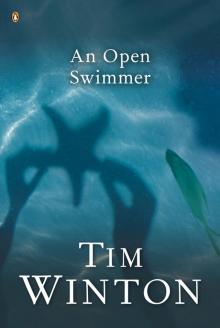 An Open Swimmer
An Open Swimmer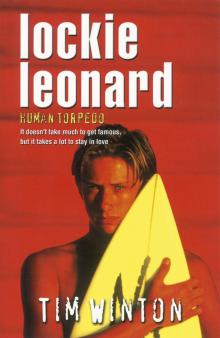 Human Torpedo
Human Torpedo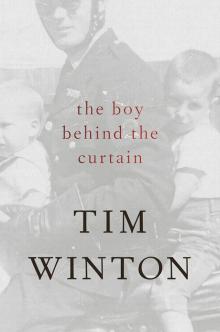 The Boy Behind the Curtain
The Boy Behind the Curtain Scission
Scission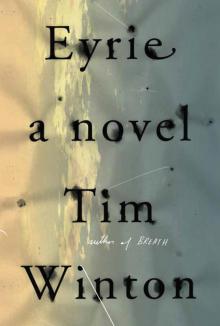 Eyrie
Eyrie Island Home
Island Home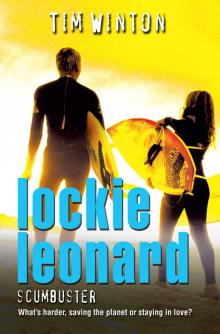 Scumbuster
Scumbuster The Turning
The Turning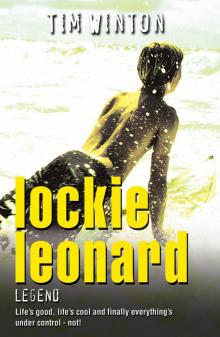 Legend
Legend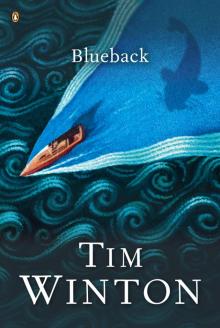 Blueback
Blueback Signs of Life
Signs of Life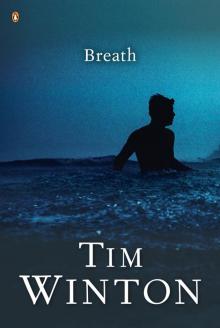 Breath
Breath Land's Edge
Land's Edge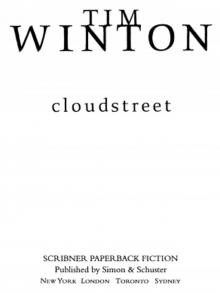 Cloudstreet
Cloudstreet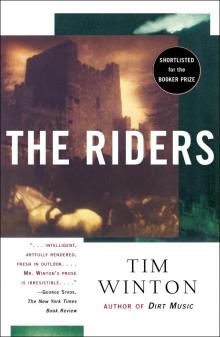 The Riders
The Riders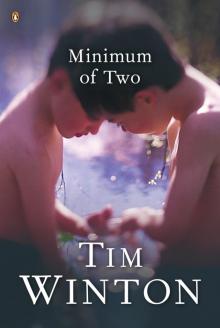 Minimum of Two
Minimum of Two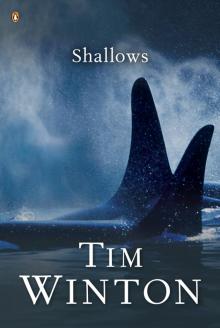 Shallows
Shallows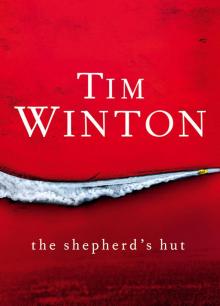 The Shepherd's Hut
The Shepherd's Hut In the Winter Dark
In the Winter Dark